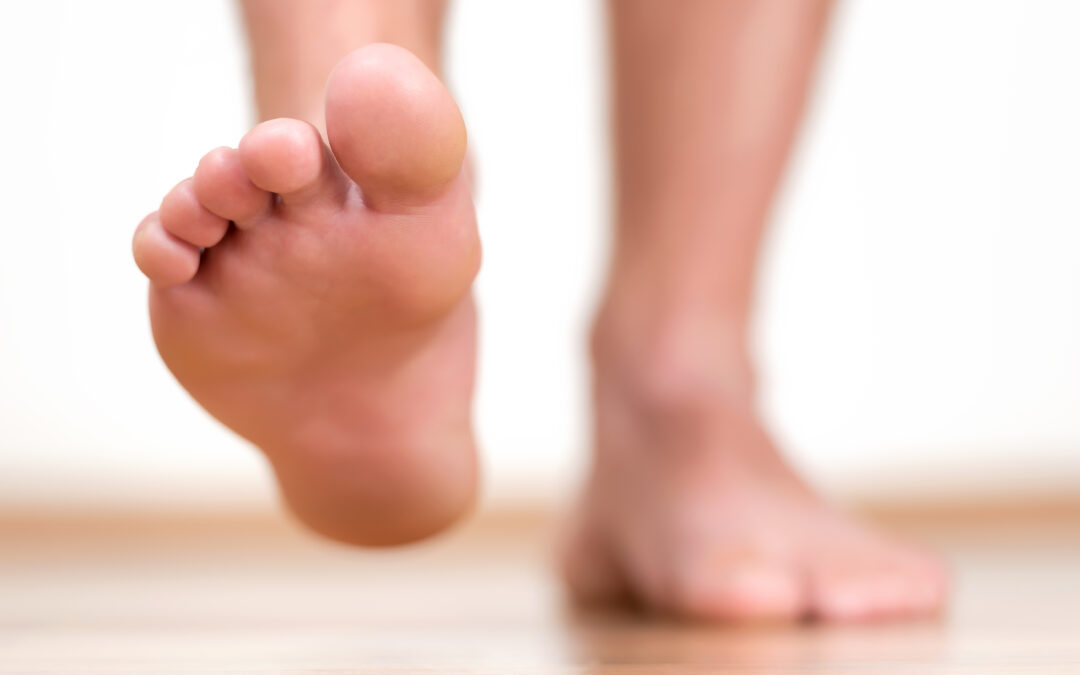Foot health is crucial to overall well-being and mobility. Common foot problems, such as plantar fasciitis, ingrown toenails, and bunions, can significantly affect daily life. Understanding the importance of podiatric health, common foot problems, and treatments can help prevent complications, like mobility issues.
The foot and ankle specialists of The Surgical Clinic in Nashville, Tennessee, want to share with you why foot health matters, specifics of common foot problems, and available treatment options with TSC.
Awareness of Podiatric Health
Healthy feet are crucial to our overall health and active lifestyle, as they are the foundation of our mobility and play a significant role in our daily activities. If foot health is compromised, it can impact other functions of the body, such as creating knee, hip, or back pain. If you don’t feel comfortable on your feet physically, then it may even prevent you from doing physical activity, which is crucial in preventing chronic diseases and maintaining a healthy weight.
Being aware of foot and ankle health can lead to earlier detection of conditions, propelling you to quicker treatment for any foot disorders. The sooner foot or ankle conditions are treated, there can be less likelihood of complications and an improvement in quality of life, helping you get back to your everyday activities.
Common Foot Problems
So, what foot and ankle conditions should you be aware of? Well, to start, foot problems are more common than you might think, affecting people of all ages, and most occurring slowly over time. Some of the most common foot problems we see in patients include:
- Plantar fasciitis
- Ingrown toenails
- Bunions
- Heel spurs
- Athlete’s foot
Let’s dive into each one and discuss the best treatment options as well as prevention.
Plantar Fasciitis
Plantar fasciitis is a common condition that results from overuse and inflammation of the plantar fascia, a thick band of tissue that runs across the bottom of your foot and connects your heel bone to your toes. The main symptom is heel pain, which is often worse in the morning or after periods of rest and can intensify with activity. Icing, foot exercises, custom orthotics, and physical therapy are common treatments for plantar fasciitis.
Severe cases might require steroid injections to reduce inflammation and pain. Addressing this condition early can prevent chronic pain and help maintain your mobility.
Ingrown Toenails
Ingrown toenails occur when the edges of the nail grow into the surrounding skin, causing significant pain and discomfort. This condition can result from improper nail trimming, tight shoes, or foot trauma.
Untreated ingrown toenails can cause infections, marked by redness, swelling, and pus around the nail. Proper nail trimming techniques and wearing appropriately fitting shoes can help prevent this painful condition.
Bunions
Bunions are bony lumps that form beside the big toe, often causing pain and swelling. They can develop due to wearing tight or narrow shoes, a family history of bunions, rheumatoid arthritis, or polio. Narrow shoes can aggravate the condition, making it more painful.
Wearing properly fitting shoes, using bunion pads, custom-made shoe inserts, and splints to relieve pressure are conservative treatments for bunions. In severe cases where pain persists, surgery may be necessary to realign the toe and alleviate discomfort.
Heel Spurs
Heel spurs are bony growths that form on the heel bone as a result of the plantar tendon pulling at its attachment to the heel. They are often associated with plantar fasciitis and can cause significant heel pain, especially during walking or running.
Rest, ice application, stretching exercises, and orthotic devices can treat heel spurs. Severe cases might need surgical removal to alleviate pain and restore function.
Athlete’s Foot
Athlete’s foot is a contagious fungal infection that thrives in warm, damp environments such as locker rooms and showers. The fungus typically affects the skin on and between the toes, soles, and toenails, causing itching, burning, and cracked skin.
Antifungal sprays, powders, or lotions are common treatments for athlete’s foot. For worsening infections, consulting a doctor for possible oral antifungal medication is crucial. Keeping feet clean and dry in addition to wearing breathable footwear can help prevent this common condition.
Causes for Foot Conditions
Most of the foot problems noted can arise from various causes, such as tissue rubbing against nerves, pressure from ill-fitting shoes, or underlying health conditions like diabetes.
Symptoms of foot problems can range from mild discomfort to severe pain, lumps on the skin, fungal infections, and calluses. If left untreated, these issues can lead to more severe foot conditions, impacting your mobility and overall health. As always, connect with your medical provider if symptoms worsen.
Effective Treatments for Foot Conditions
Effective treatments for foot conditions are crucial to maintaining foot health and preventing complications. Podiatrists play a vital role in early and effective management, reducing healthcare costs and improving patient outcomes. Treatments can range from:
- Home remedies
- Medication
- Physical therapy
- Surgical interventions
Here are some common treatment approaches for foot conditions.
Conservative Treatments
Conservative treatments focus on managing foot pain and other issues without surgical intervention. Physical therapy can enhance foot function and reduce pain, making it a key component in managing chronic foot pain. Orthotics, which are custom-made shoe inserts, can also provide support and alleviate discomfort.
Lifestyle modifications like wearing properly fitting shoes and maintaining a healthy weight, alongside physical therapy and orthotics, can significantly improve foot health and reduce pain.
Surgical Interventions
In some cases, conservative treatments may not be sufficient, and surgical intervention may be necessary. Conditions such as severe bunions and persistent heel spurs often require surgical correction to alleviate pain and restore function. For example, bunion surgery involves realigning the toe to reduce pain and discomfort.
Evaluating surgical options with specialized foot and ankle surgeons ensures the best possible outcomes for patients. Surgical removal of heel spurs is a common procedure aimed at relieving heel pain and improving mobility, including options like ankle surgery.
Home Remedies
Home remedies, such as using ice to reduce swelling and Epsom salt soaks to relieve discomfort, are simple and effective solutions for minor foot problems.
Adding these home remedies to your routine can significantly help maintain podiatric health and alleviate minor discomforts. However, persistent or worsening symptoms require medical attention to prevent complications.
When to See a Podiatrist
Some signs that it’s time to see a podiatrist include:
- Persistent Pain
- Swelling
- Discoloration in the foot or ankle
- Infections
- New growths or bumps on the feet
If you have diabetes, it is especially important to seek medical attention for any foot wounds or infections, as they can lead to serious complications if left untreated. Timely medical attention can prevent minor issues from becoming major problems and ensure your feet remain healthy and functional.
The Role of Podiatrists
Podiatrists help you maintain your health by addressing mobility-affecting conditions. They treat foot and ankle issues using both conservative and surgical measures, ensuring comprehensive care. Podiatrists are equipped to prescribe medications, perform diagnostic tests, and conduct surgeries related to foot and ankle conditions.
Podiatric physicians have unique training that allows them to provide specialized care for lower extremity disorders. They can specialize in various fields, including surgery, orthopedics, and podiatric sports medicine, making them versatile and essential members of the healthcare team. The podiatrists at The Surgical clinic possess credibility and compassion, to better serve each and every podiatrist patient.
How to Prevent Foot Complications
Knowing how to prevent foot complications is the first step in having healthy feet! Some ways to prevent severe foot complications include:
- Wearing properly fitted shoes
- Washing and drying feet daily
- Regularly trimming toenails, but not too short
- Changing socks daily
- Monitoring feet for cuts or infections
Find Foot Care in Nashville, TN with The Surgical Clinic
Maintaining podiatric health is essential for overall well-being and an active lifestyle. If you are facing foot conditions that disrupt daily life, contact The Surgical Clinic for podiatric care. TSC podiatrist Dr. Timothy Bush is one of our qualified, and skilled providers, who is knowledgeable in treating conditions like:
- Athlete’s foot
- Bunions
- Plantar Fasciitis
- Ingrown toenails
- Heel spurs
At TSC we aim to prioritize foot and ankle health, to ensure all our patients can continue to be supported through every step of life.
Contact us today for any of your foot or ankle conditions, we look forward to connecting with you.

